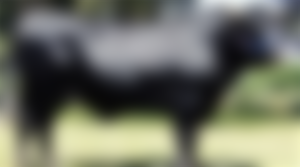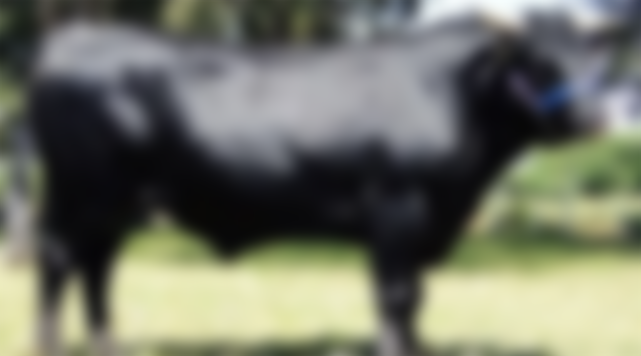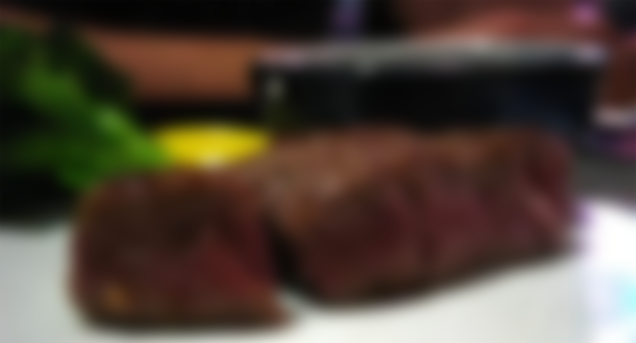One of the most expensive and required meats in the different countries of the world is the so-called Kobe meat, a true delicacy for those who like cuts of cow that are not available everywhere, and that many do not know and have not tried until the moment. Of Japanese origin, from the birth of cattle to the moment it is ready to hit the shelves, Kobe beef goes through a detailed and precise process, which gives it all the value that is then reflected in the expensive price. Due to its great appeal and global success, we immersed ourselves fully in this part of the gastronomic world to learn what Kobe meat is and why it is so expensive.

_Carne Kobe, his discovery:
Kobe meat comes from a Japanese cow, but to get Kobe meat you have to go a long way that begins from its origin to its breeding and maintenance. Cows raised for the purpose of offering Kobe beef can only belong to cattle raised in Kobe, a city located on Osaka Bay in central Japan, the capital of Hyogo, from which its name comes. Second, they must have a specific lineage that is recorded dating back to the Meiji period. What is that moment in Japanese history about, where Kobe beef begins to take flight? The Meiji period was the time of great political and social misalignment in Japan, where the country opened its doors to the world and ended government systems that had flourished for hundreds of years since 1868. Until then, no one imagined the delight that the world was about to know. The city of Kobe opened its doors to foreign trade as an international port. With so many foreigners arriving in that capital city and settling there, Kobe soon became a very cosmopolitan town, a meeting point between cultures and a crossroads between their traditions. At that time it was not customary to eat meat in Japan like now. However, this part of the story was about to change when a tourist of English origin first tasted Kobe meat and detected the unique characteristics that only the best meat in the world has ever possessed. Since that time, the reputation of Kobe beef has crossed oceans to become nothing less than the most sought-after meat on the planet.
_Bowl of origin:
This type of Kobe meat comes from a very special breed of beef cattle, known around the world as Tajima-gyu, which is raised, as we have mentioned before, in the so-called Japanese prefecture of Hyōgo. It is a totally black bovine. This characteristic identifies it, makes it unique and gives it all the value that is transmitted from generation to generation. The Tajima-gyu cattle from which the Kobe beef arises are not raised in the same way as all known cattle, but part of its spectacularity has to do with the fact that it remains isolated from any other bovine breed, growing completely free, surrounded by the Japanese mountainous landscape, which has allowed to develop particular characteristics in this Kobe meat that distinguish it. This is how you get a higher level of quality in kobe beef. According to the specialists, the isolation of the herds and specific feeding techniques resulted in a very peculiar differentiation in the taste and texture of Kobe meat. Kobe beef is renowned for its exquisite, markedly superior flavor, its softness, and its high amount of intramuscular fat, evenly distributed to provide a very specific marbling appearance.
_The importance of food:
A key piece of information for obtaining Kobe beef has to do with diet. For this, the Kobe Beef Marketing & Distribution Promotion Association has specific farms where calves intended to be Kobe beef are born. After six months they are auctioned to be raised and fattened on special farms for this purpose, although it will not be known if this was achieved until they are slaughtered. As the days go by, the type of feed that the cattle receive is essential to obtain good Kobe beef. For them, the diet of the animals that give rise to Kobe meat is based mainly on grains, they drink pure water and live stress-free in a controlled and relaxed environment. Unlike free-range cattle, the kuroge washu is fed with wheat, rice, barley and other grains included in a specific feeding plan. The time that this breeding process takes to obtain the Kobe beef is 30 months, when the cows are finally slaughtered and it can be seen if they reach the degree of kobe beef, that is, if they have a fat marbling or shimofuri, characteristic that gives the meat a unique flavor, texture and firmness.

_Kobe beef is rated in three ways:
* yield score or yield
* meat quality score, which is the overall quality * marbling
Only cows that meet these characteristics will be called kobe beef.
_Characteristics of Kobe beef:
Broadly speaking, it is the marbling in combination with the maturity of the carcasses and the level of muscle firmness, which determines the degree of quality of the meat and its level of softness, juiciness and flavor. In addition to being the best quality meat, it turns out to be a much healthier meat than common commercial meat, thanks to its high concentration of fatty acids, such as Omega. Part of the reason for its high value is due to its unique aging techniques, which have been designed and perfected over the years taking into account enhancing the flavor and texture of each cut.

_The secret of its prestige lies in its exclusivity and is summarized in the following points:
* High degree of distinctive marbling * Lean meat with refined sweetness
* Unmatched flavor
* Rich in oleic acids, omega 3 and 6 that add to its flavor
*Maximum quality
* Considered the finest and most delicate meat in the world
Even within the Japanese black cattle (tajima-gyu), only few cattle meet the quality standards required to be considered Kobe beef.
_What points are taken into account in your classification ?:
There are several aspects that are key when thinking about how to distinguish Kobe beef. Among them we can highlight:
*Breeding There are designated producers in Hyogo prefecture who dedicate all their energy and commitment to raising 100% purebred tajima-gyu cattle that ends with the production of the best Kobe beef.
*Driving Cattle have to be born, raised and slaughtered on the slaughterhouses of Hyogo Prefecture. Afterwards, it goes through an inspection after which it is sent to the different distribution points as previously agreed.
* Certification Only tajima-gyu beef with a high BMS and fine texture in meat, which have successfully passed weight limitations and other strict rules, can be officially certified. I eat Kobe beef.
*Lineage What affects the quality of the meat the most, over anything else, is its lineage. Japanese black cattle (tajima-gyu) originate from the mountainous regions of Japan. Its unique breeding and the geographical conditions of its origin make this lineage unique, above any other breed of Japanese cattle (wagyu). In a farm where this type of cattle are raised, special care is taken into account such as exceptional nutrition, clean high-quality water to drink, a stress-free environment for cattle, so that they can grow up relaxed until they reach maturity.
_Production per year:
Japan, the great producer and where this Kobe beef came from, produces 5,000 cattle a year, of which it exports 12% of the total. As information to take into account, the name of the bovine comes from the kanji 和 (wa, which means "harmony" or, sometimes in abbreviations, "Japan") and 牛 (ushi or gyū, "cow" / "bovine" / "veal").
The meaning is simply "Japanese cow". There are four main types of Wagyu:
* black Japanese
* Japanese brown
* Japanese speckled
* Japanese short-horned
The official names for these Japanese breeds include: Tajima, Tottori, Shimane, Kochi, and Kumamoto. After the US intervention, they were imported to the United States, Australia, Brazil, Uruguay, Chile, Mexico, Argentina, Colombia, Paraguay and Spain.

_Can you match Japanese wagyu ?:
Purists say there is nothing like Kobe beef. What's more, they say that strictly only Japanese cattle can be called wagyu. However, many countries strive to reproduce the characteristics that make Kobe so good, that is, the infiltrated fat that gives it its delicious flavor and unique texture. Although the genetic part can be achieved thanks to imports, the environment, which is also key, is more difficult. If you take a group of Iberian pigs, take them to Ukraine and they start to be raised there, could we continue to talk about Iberian pigs? Meat could be good, but obviously it wouldn't be the same. In addition, to detect it, the Nogujiku is taken into account, a stamp shaped like a chrysanthemum (the Japanese national flower) that only certified Kobe meat can carry. But there are two other important pieces of evidence: the bronze statue that is delivered to establishments that sell certified Kobe meat and the certificate of authenticity itself, which includes the aforementioned seal, the mark of the muzzle of the beef (as a kind of fingerprint) and the identification number.
_Conservation of Kobe beef:
When it comes to importing exotic meats such as Kobe or Wagyu, conservation is key. There are several ways to preserve a product, "with artificial additives (putting them in an atmosphere with gases, injecting them with sulfites, stabilizers ...) or by deep freezing". The home freezer is a piece of equipment that is made to keep the temperature at -18 degrees. The freezing process is slow and the food dehydrates and crystals form. Deep freezing consists of freezing very quickly so that this does not happen, at -35 degrees. In this case, defrosting has to be the opposite, very slow. It's not enough to put it in the microwave for three minutes and that's it.
I know that the publication is quite long but I found it all so interesting that I couldn't decide what kind of things to ignore, I think everything is incredibly curious and I wanted to share it with all of you.



